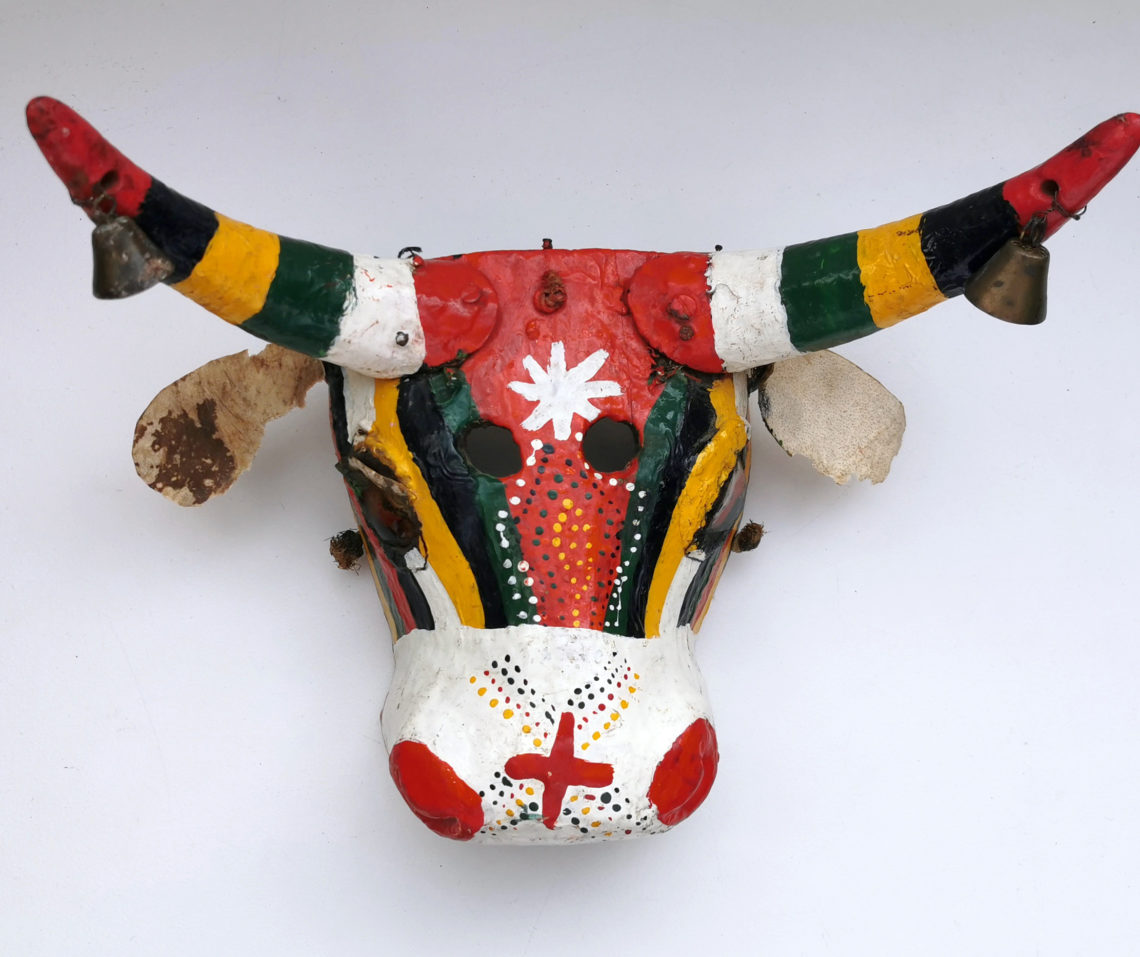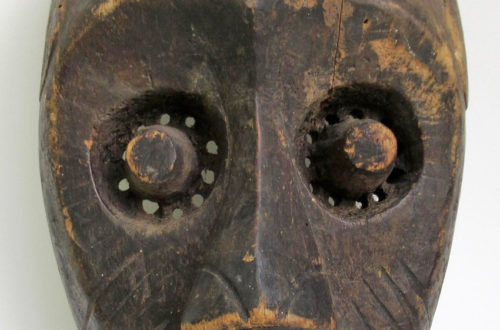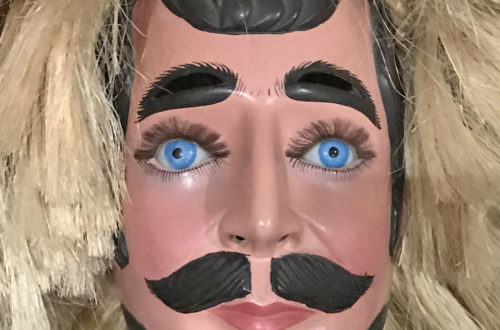 Q: The “Torito” is a frequent character in Guatemalan traditional dances. This a colorful example from the Quiché-speaking Highlands. This type of bull mask is used during the “Baile Toritos” in Chichicastenango or in several other villages in Quiché province, or the “Baile Vaqueros” in Totonicapán. It is made in cedar hardwood, and dates probably from the mid-XX century.
Q: The “Torito” is a frequent character in Guatemalan traditional dances. This a colorful example from the Quiché-speaking Highlands. This type of bull mask is used during the “Baile Toritos” in Chichicastenango or in several other villages in Quiché province, or the “Baile Vaqueros” in Totonicapán. It is made in cedar hardwood, and dates probably from the mid-XX century.
The carving and style differs significantly from toritos made in other Mayan areas, as toritos with scorpions from Rabinal in the Achi-speaking Verapaces (see post of Sept 24, 2018), or the very typical small-size mask with a big bell and ribbons used in the Patzcar dance in the province of Sololá (see post of July 26, 2019).
The present masks have usually one or two crosses painted on the face, and the horns are pierced to accommodate one or two little bells. Interesting is the double M mark carved on the back side, found on several other masks from the mid XXth century. According to Pieper’s allegations, it could be the sign of the “moreria de Sololá”, but without any certainty at this point. (I do not succeed in having this confirmed by locals, up to now).
A: Jean has shared another beautiful Guatemalan mask with us. This time I’m posting all five of his his photos as sent. He is a master of photography. You can learn a lot from this guy. Don’t hesitate to contact me if you want to learn more about photographing masks.
I will give this mask an A+ because a major museum should have an attraction like this.









